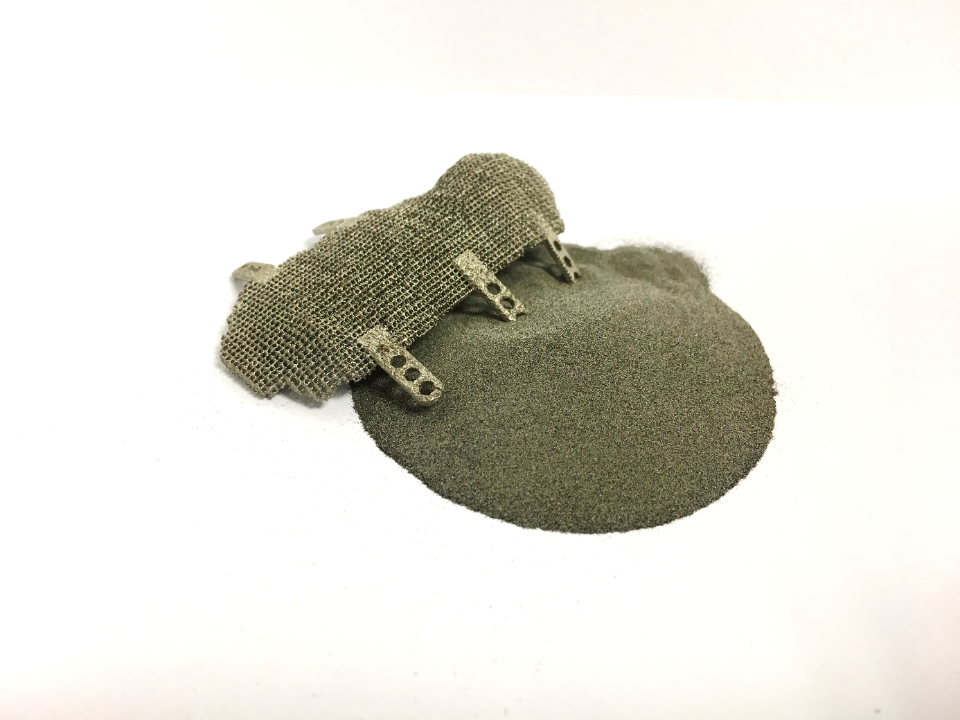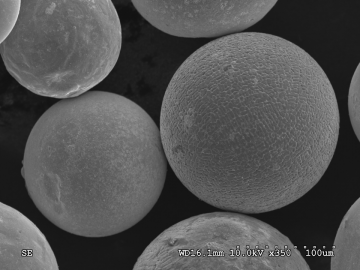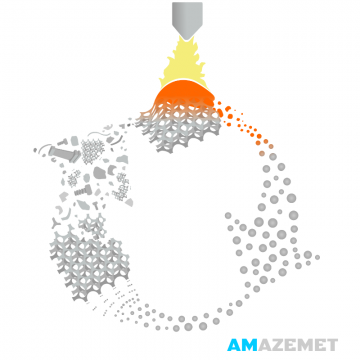With so many metal alloys on the market today, the sky should be the limit for users; however, researchers from Warsaw University of Technology fill us in on some metal 3D printing information that may be surprising to some—beginning with the fact that while there may be several thousands of metallic materials available today, roughly only thirty of them are used in digital fabrication.
 Newer alloys take longer to produce, explain researchers, because of the amount of work it takes to create suitable feedstock. Now, Warsaw University of Technology scientists have created a new device—and a solution. Working from the Materials Design Division, researchers have been able to study metal 3D printing extensively.
Newer alloys take longer to produce, explain researchers, because of the amount of work it takes to create suitable feedstock. Now, Warsaw University of Technology scientists have created a new device—and a solution. Working from the Materials Design Division, researchers have been able to study metal 3D printing extensively.
Professor Wojciech Święszkowski is the head of the division, working there with Dean of the Faculty of Materials Science and Engineering professor, Jarosław Mizera (supervisor of the 3D printing lab). Engaged in one of the most popular methods of metal 3D printing, laser direct metal laser sintering (DMLS), they realized there were numerous materials with ‘extraordinary properties,’ and according to Żrodowski, especially in nanocrystalline and amorphous materials.
DMLS research has been ongoing at the Faculty of Materials Science and Engineering since 2011—and the technology was not only a radical departure for innovation and manufacturing around the world, but also in Poland where it was ‘completely new.’
“… our first laboratory device, Realizer SLM 50, was purchased as part of the CePT project,” said Bartłomiej Wysocki PhD. “We had to gain experience training subsequent generations of operators and experts. Fortunately, it turned out that we can conduct world-class research, implementing innovations and publishing in the world-best journals. Since then, we’ve promoted dozens of technologies as part of national strategic projects that we ran in the laboratory. Our work mainly focuses on scaffold materials for bone tissue engineering and regenerative medicine.”
The researchers are centering their work around creating heat-resistant nickel superalloys, with the use of an EOS M100 machine purchased this year. They quickly realized that with DMLS they can improve materials:
“Not only thin-walled cell structures, but also fine-tuning the chemical composition, e.g. by controlled oxygen pickup during printing allow for obtaining better materials,” says Bartłomiej Wysocki, PhD, supervisor of the biomaterial part of the 3D printing laboratory and CEO of MaterialsCare. “From the very beginning of the laboratory’s operation, we’ve experimented with various titanium alloys (including Ti6Al4V and Ti6Al7Nb) as well as composites based on titanium and ceramics. Since 2014, we have been working on metallic glasses, which ended in their spectacular commercialization by selling the patent application to Heraeus GmBH.”
The group began developing its new concept several years ago.
“Traditional methods of powders production require either high capital expenditure or a multi-stage procedure of forming the material into a wire,” explains Łukasz Żrodowski. “In both cases, it was not possible to quickly produce a powder suitable for 3D printing on laboratory scale.
“Therefore, in 2016, we came up with an idea to create device of own design – suited to the technology and the needs of researchers. Thanks to this, instead of producing industrial quantities of materials on large industrial equipment, waiting weeks and paying thousands, scientists can obtain exactly as much material as they need and quickly fine-tune its properties. This will significantly improve research work.”
With the rePowder solution, users are able to look forward to excellent quality in metal power no matter what the original feedstock is like. Previous alloy and failed prints can also be ‘pulverized’ and materials re-used in the closed loop R&D system. The researchers who have developed the new device and technology will all benefit in their work at the Faculty.
“We want the device to serve researchers and promote our technology,” says Łukasz Żrodowski, inventor of the rePowder device.
3D printing with metal has sparked off an incredible study of the science of materials, especially due to the potential for industrial use—allowing for innovative new AM systems, on-demand printing, and even 3D printing in space.
What do you think of this news? Let us know your thoughts; join the discussion of this and other 3D printing topics at 3DPrintBoard.com.
[Source / Images: Warsaw University of Technology]Subscribe to Our Email Newsletter
Stay up-to-date on all the latest news from the 3D printing industry and receive information and offers from third party vendors.
You May Also Like
3D Printing News Briefs, April 13, 2024: Robotics, Orthotics, & Hypersonics
In 3D Printing News Briefs today, we’re focusing first on robotics, as Carnegie Mellon University’s new Robotics Innovation Center will house several community outreach programs, and Ugogo3D is now working...
Rail Giant Alstom Saves $15M with 3D Printing Automation Software 3D Spark
3D Spark has entered into a three-year deal with the rail giant Alstom. Alstom, a transport behemoth with annual revenues of $16 billion, specializes in the manufacture of trains, trams,...
Meltio Expands Global Reach with New Partnerships in the Americas and Europe
Spanish 3D printing manufacturer Meltio has expanded its sales network across the globe. With the addition of three new partners in the United States, Brazil, Argentina, and Italy, Meltio aims...
3D Printing Webinar and Event Roundup: April 7, 2024
Webinars and events in the 3D printing industry are picking back up this week! Sea-Air-Space is coming to Maryland, and SAE International is sponsoring a 3D Systems webinar about 3D...



































